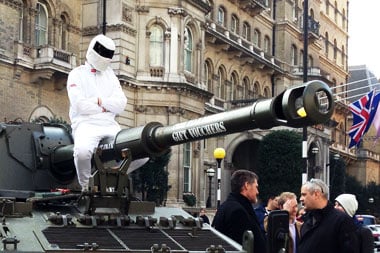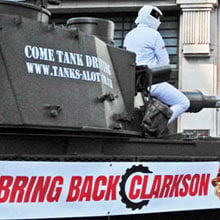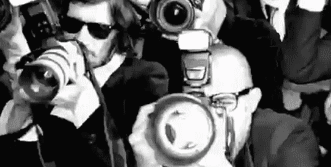How the tank backfired: six steps to Clarkson's downfall

Insights looks at how - and why - BBC boss Tony Hall chose to put the reputation and integrity of his corporation over the popularity of its leading act
Jermaine Haughton
The official sacking of BBC driving talent Jeremy Clarkson was finally confirmed yesterday afternoon. In any other circumstances, the dismissal of a worker on a final warning for punching a colleague in the face would be an inevitable formality requiring no more fuss than the simple whack of a rubber stamp on the paperwork. But when the assailant is your most profitable and famous factual broadcaster, with tens of millions of fans across the globe, things get a little more complicated.
Here is our guide to how Clarkson went from the fast lane to the scrapyard in a fortnight.
1. The “fracas”
In his statement to the media yesterday, BBC director-general Tony Hall confirmed that what was initially described as a “fracas” between Clarkson and his line producer Oisin Tymon actually had far more disturbing dimensions. According to Hall, Tymon, “who is a completely innocent party, took himself to Accident and Emergency after a physical altercation accompanied by sustained and prolonged verbal abuse of an extreme nature”. Hall added: “This has obviously been difficult for everyone involved but in particular for Oisin. I want to make clear that no blame attaches to him for this incident. He has behaved with huge integrity throughout. As a senior producer at the BBC he will continue to have an important role within the organisation in the future.”
2. The probe
BBC director of television Danny Cohen yanked Clarkson from the cameras six days after the incident, and an internal investigation began last week, led by Ken MacQuarrie, director of BBC Scotland. In 2012, MacQuarrie was responsible for an internal investigation of Newsnight, following several members of the programme’s team expressing their frustration over a decision to shelve a report that levelled allegations of child abuse against late DJ and presenter Jimmy Savile. MacQuarrie was clearly of a serious pedigree on probing high-level issues in areas where the BBC’s reputation was at stake, and was unlikely – much like Clarkson himself – to have pulled any punches.

3. The tank
Following Clarkson’s suspension – and the removal of his show Top Gear from the BBC’s schedules – political blogger Guido Fawkes mobilised public support for the star via a Change.org petition that eventually chalked up more than one million signatures. That petition was subsequently delivered to the BBC’s Maida Vale studios by Top Gear’s mystery driver The Stig, mounted on the back of a Fawkes-branded tank. While this was all very impressive and boisterous, it was nonetheless very much based on Clarkson’s cult of personality in the public eye, rather than the employment legalities and regulations around what he was alleged to have done.
4. The reality check
In our recent news item on the initial “fracas”, Wilkes Partnership employment law specialist Darryll Thomas questioned the value of the bombast that had coalesced among Clarkson’s backers. “Despite the public petition to reinstate Clarkson,” he said, “all employers have a duty of care to their employees, which in this case would be the assaulted producer. The producer is entitled to a safe working environment and could argue that if Clarkson was left unpunished by this, then the BBC has breached his employment contract – entitling him to resign and claim constructive dismissal. There is also clear caselaw that employers should not consider third-party pressure and demands when making a decision relating to matters such as this.” Jeremy – don’t say we didn’t warn you…
5. The verdict
MacQuarrie’s report to Hall concluded that “on 4 March 2015 Oisin Tymon was subject to an unprovoked physical and verbal attack by Jeremy Clarkson. During the physical attack Oisin Tymon was struck, resulting in swelling and bleeding to his lip. The verbal abuse was sustained over a longer period, both at the time of the attack and subsequently.” Delivered in a hotel where the production team was staying, the verbal abuse – according to MacQuarrie – “contained the strongest expletives and threats to sack [Tymon]. The abuse was at such volume as to be heard in the dining room, and the shouting was audible in a [nearby] hotel bedroom.”
6. The final curtain
Tony Hall said in his statement on Clarkson’s future: “The BBC is a broad church. Our strength in many ways lies in that diversity. We need distinctive and different voices but they cannot come at any price. Common to all at the BBC have to be standards of decency and respect. I cannot condone what has happened on this occasion.”
However, somewhat sugaring the pill, he added: “Obviously none of us wanted to find ourselves in this position. This decision should in no way detract from the extraordinary contribution that Jeremy Clarkson has made to the BBC. I have always personally been a great fan of his work and Top Gear. Jeremy is a huge talent. He may be leaving the BBC but I am sure he will continue to entertain, challenge and amuse audiences for many years to come.”
It is now highly likely that the BBC will face its own set of questions on how it managed that talent – and specialist media-industry commentator Steve Hewlett has set the ball rolling. Reacting to MacQuarrie’s report, he said that it was “hard to fault the inquiry”, but added: “broadcast depends on talent and it would appear there was a long-term failure on talent management in this regard.”
For further thoughts on talent management, head to CMI’s special resources on the topic.
Images of The Stig on THAT tank courtesy of BasPhoto / Shutterstock.

Press & Media Enquiries
For more information or to request interviews, contact CMI's Press Team on 020 7421 2705 or email press.office@managers.org.uk


